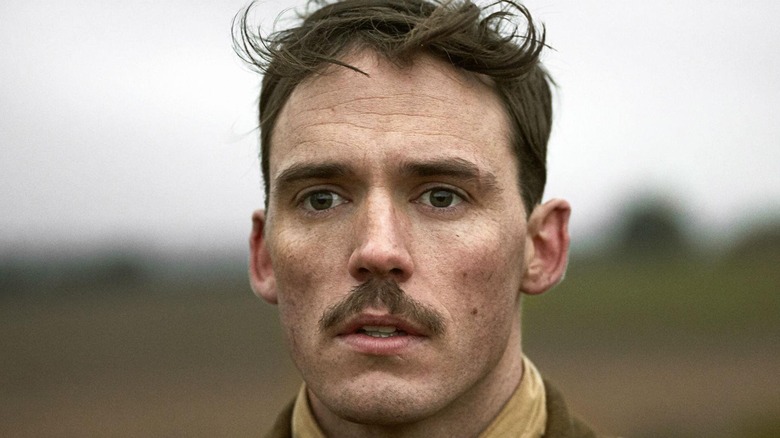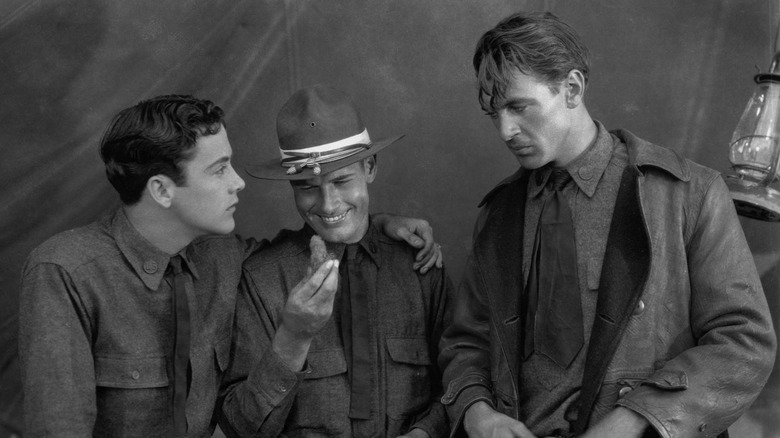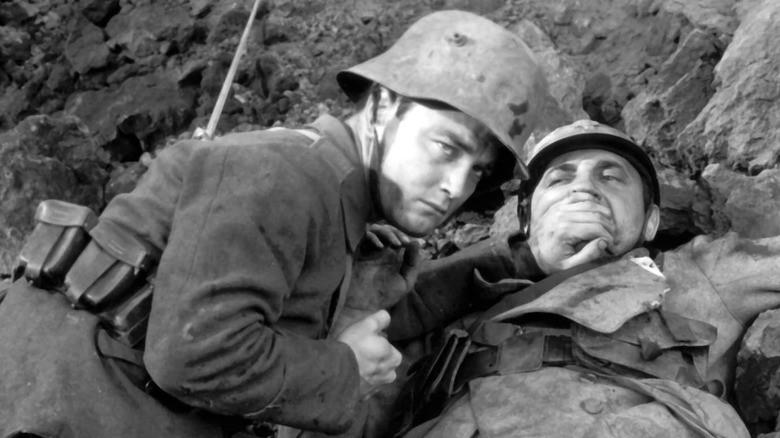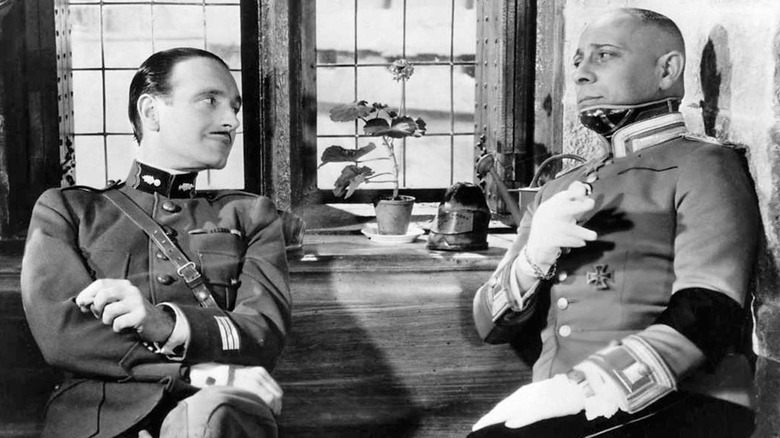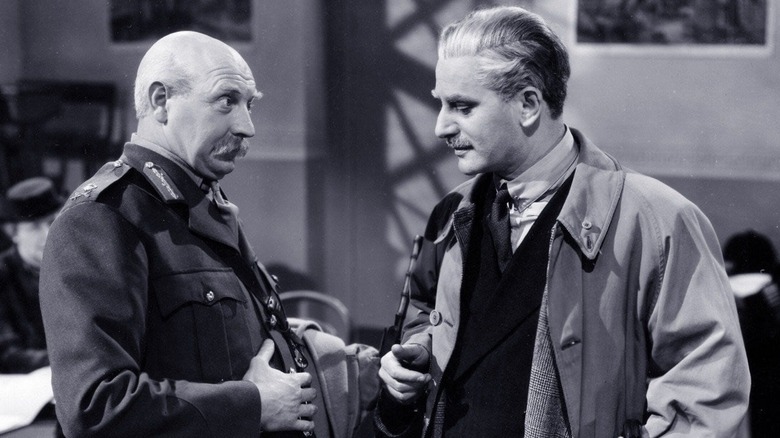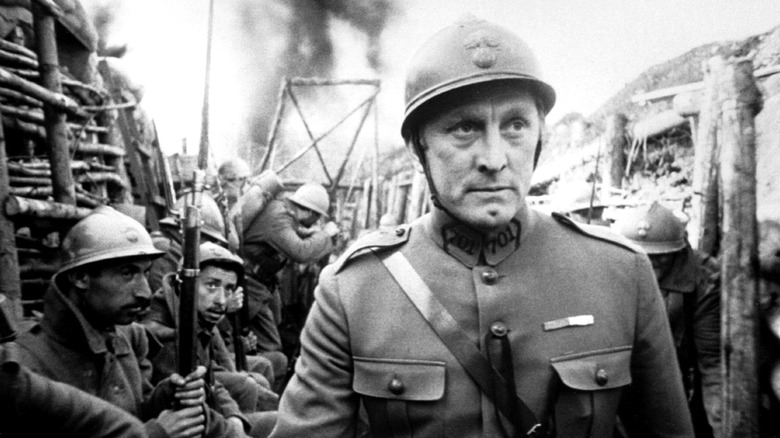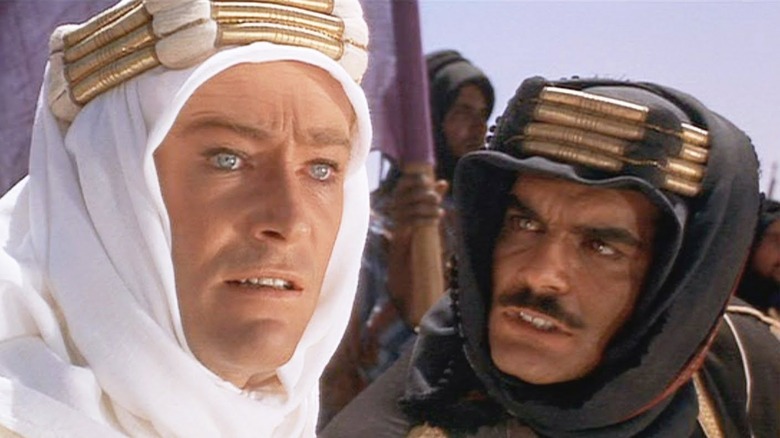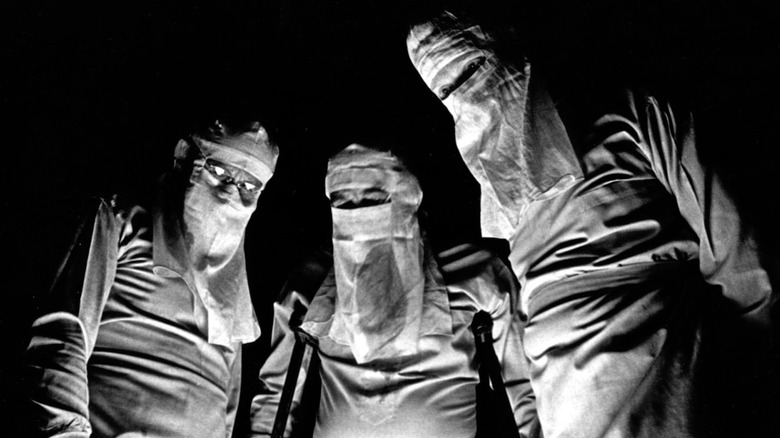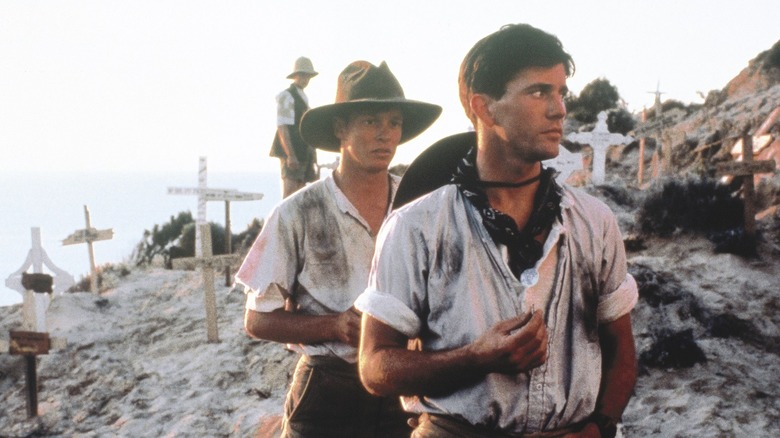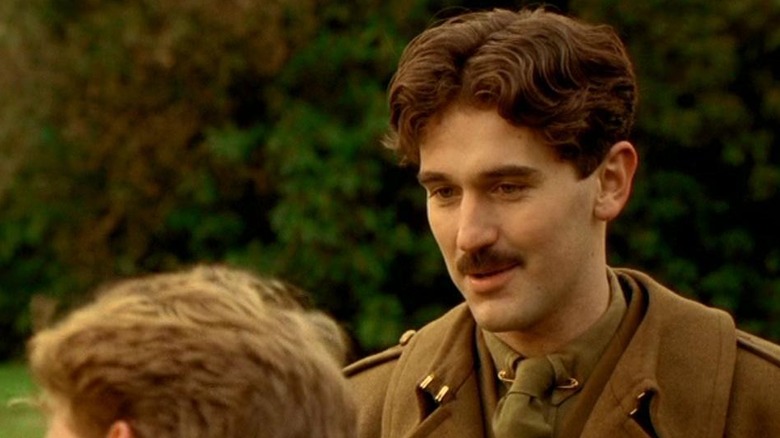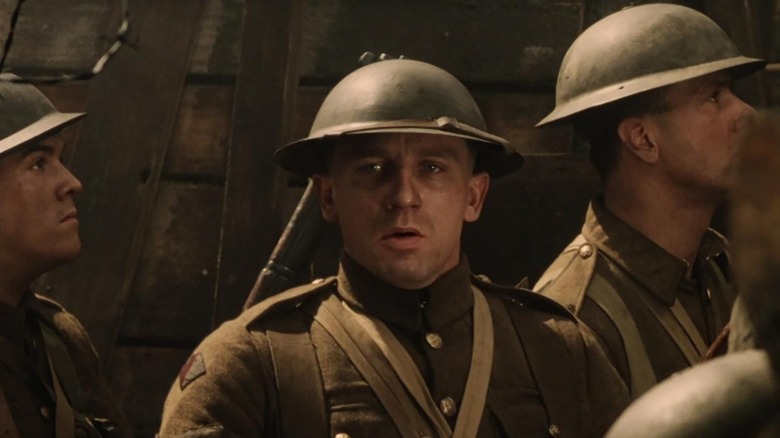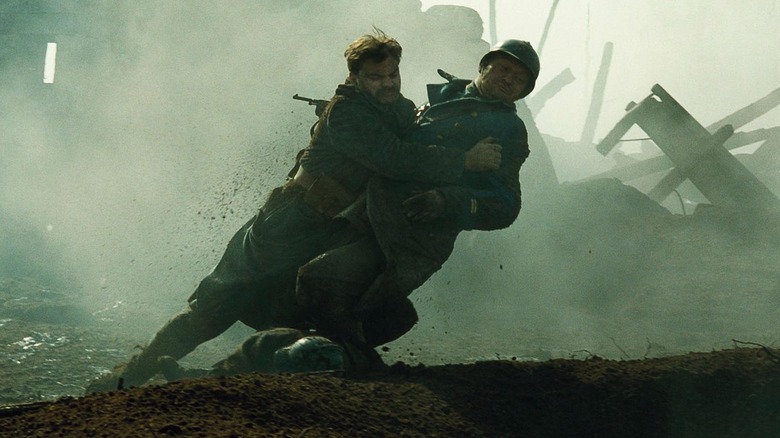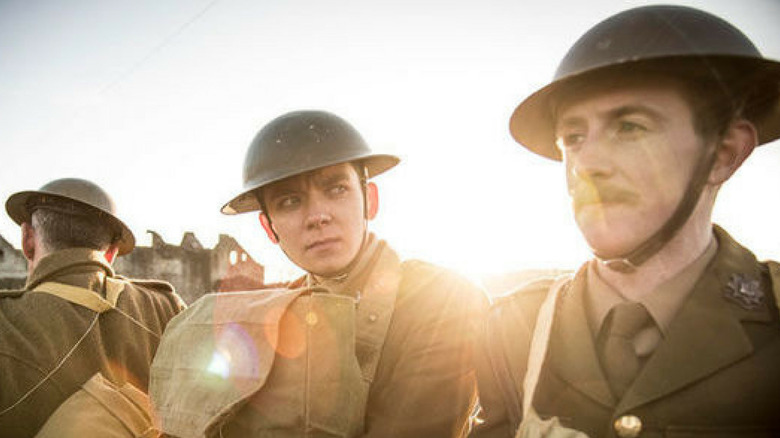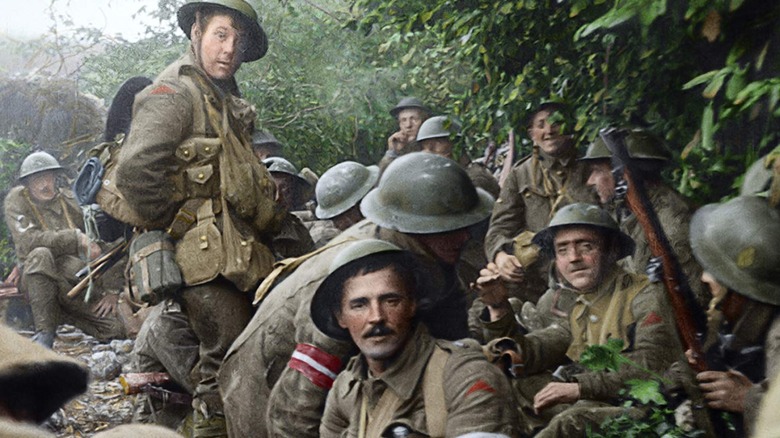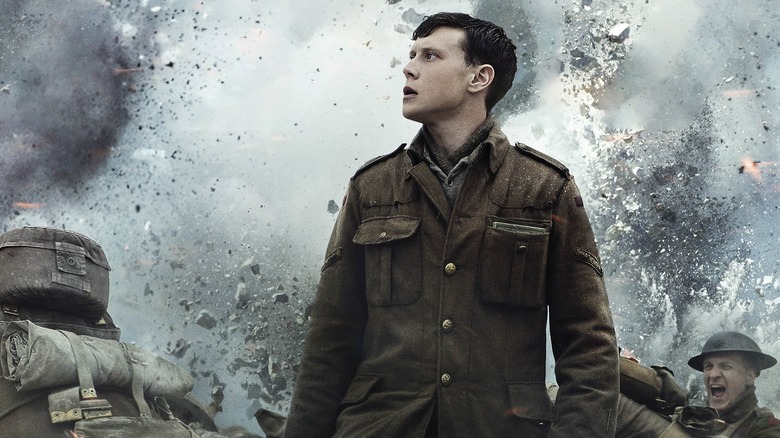The 14 Best World War I Movies Ever Made
We may receive a commission on purchases made from links.
World War One is underrepresented on the big screen, certainly in comparison to the Second World War. Although fought from 1914, the late entry of the U.S. in 1917 and their relatively small losses could be a factor in this. The bleak tragedy and hollow futility of the First World War compared to the second, which had a much clearer motive and offered more chances for gung-ho heroism, is another reason why it's not exactly Hollywood movie material.
For understandable reasons, most of the films on this list are British and several have literary origins, being based on novels and plays. With the centenary of the end of the First World War in 2018, it is starting to fade into the background and does not appear in media and culture so much. This is why preservation projects such as Peter Jackson's "They Shall Not Grow Old" are so important, as this war should remain alive and fresh in the collective memory, especially because there are so many lessons to be learned from it. These WWI films stretch from the 1920s to the 2010s, and each one reflects the time in which it was made. The layering of history through the prism of the decade viewing it is an important consideration here. Join us on a tour of almost a hundred years of World War I movies.
Wings (1927)
The first-ever winner of the best picture Oscar is an epic involving hundreds of extras and spectacular air battles, bringing the burgeoning popularity and excitement surrounding both airplanes and moving pictures to mass audiences. Charles Lindbergh's transatlantic flight happened in May 1927, the same year as the premiere of "Wings," and movie attendance soared during the decade. The focus of the story is a love triangle in small-town America between Jack (Charles Rogers), David (Richard Arlen), and Mary (Clara Bow, a huge star at the time). Yet it actually becomes much more about the friendship between Jack and David. It also features an early Gary Cooper role, in not much more than a cameo, but it would be a star-making turn for him.
If you're not overly familiar with early cinema, "Wings" features many elements that might surprise you, including brief nudity (this was before the Hays Code), as well as deep affection and even kissing shown between men. It also displays some jaw-dropping technical achievements, such as the establishing tracking shot in the Parisian café which swoops over tables and through partying couples. The fact that a film as important as this was almost lost makes one think about what else out there has not been preserved. The ending is melodramatic but also genuinely tender. "Wings" is an important film for many reasons, not least that it was made by William Wellman (who had actual WWI combat experience), and is still hugely entertaining almost a century later.
All Quiet on the Western Front (1930)
It never fails to astonish that perhaps THE best-known WWI film is an American movie made in 1930, which is set amongst a German regiment. It feels like "All Quiet on the Western Front" could have only happened at this precise point in time, portraying Germans sympathetically as humans affected by war just as much as the Allies. This is very much a "war is hell" film, showing the lack of food, the psychological torment coming from the men's own officers, as well as viscerally portraying their fear and disillusionment.
One of the most well-known sequences is when protagonist Paul (Lew Ayres) stabs a French soldier but then stays with the dying man in a shell-hole throughout the night, wracked with guilt. It also shows the devastation and fear caused by injuries: The men would go to hospital and be terrified of having their limbs amputated, or convinced that they would never leave. Perhaps most importantly, "All Quiet on the Western Front" shows the propaganda being fed to schoolboys to whip up fervor for war and encourage recruitment. Both "Wings" and "All Quiet" reveal masculinity in a much more sensitive and vulnerable light than we've been led to believe men were allowed to be at the time, especially among soldiers. The bonds that form between enlisted men and the devastation when they lose their comrades is just one of so many hugely heart-breaking aspects of this war.
La Grande Illusion (1937)
After Germany and Russia, France suffered the most losses during WWI. While we're used to seeing British and even American viewpoints on this war, the French perspective is a valuable one. "La Grande Illusion" focuses on a small group of French officers who become prisoners of war, revealing the social hierarchies and class differences between them. Aristocratic Bouldieu finds he has more in common with German officer Rauffenstein, who is also a member of the nobility, than with his allies. There is also Maréchal, a lower-middle-class mechanic, and the Jewish nouveau richer named Rosenthal. Including a sympathetic Jewish character in 1937, when antisemitism was on the rise, speaks to the time when the film was made.
"La Grande Illusion" manages to cover an incredible amount in less than two hours, and feels like it's split into three quite different chapters. There is the first camp, which involves the officers digging a tunnel (which undoubtedly influenced "The Great Escape"), followed by the second camp in a mountaintop castle where an even more audacious escape is pulled off. Then there's the whole sequence where Maréchal and Rosenthal take refuge on a widow's farm, which has a very distinct feel by bringing a love story into it. The writing and acting of "La Grande Illusion" make it stand the test of time, and it's an interesting companion to a film like "Journey's End" which focuses on a small group of British officers.
The Life and Death of Colonel Blimp (1943)
Before making the masterful WWII film "A Matter of Life and Death" in 1946, Powell & Pressburger made another war film in 1943 as an epic that covered the Boar War, the First World War, and the beginnings of the Second World War. At its center, "The Life and Death of Colonel Blimp" is about the enduring friendship between a British officer named Clive Candy (Roger Livesey) and a German one, Theo Kretschmar-Schuldorff (Anton Walbrook). It's also a love story with Deborah Kerr, who plays three different women who coincidentally all look very similar.
For understandable reasons, it's hard to find any WWI films made in the 1940s, as the Second World War dominated that decade (and would go on to dominate war films up until this day). While the previous wars are very much being viewed through the lens of a world preoccupied with the war it's currently enduring, this makes for an interesting perspective, especially on the cyclical nature of war. It was obviously controversial for featuring a sympathetic German character, whose view of war is perhaps more understandable than that of the British officer who struggles to adapt with the times. Livesey's performance turns what could have been a ridiculous character into a beloved one, and Powell & Pressburger's signature Technicolor cinematography makes "Colonel Blimp" the masterpiece that it is.
Paths of Glory (1957)
As with "All Quiet on the Western Front," Stanley Kubrick's take on WWI is an American movie that is not from the point-of-view of American soldiers. "Paths of Glory" stars Kirk Douglas as Colonel Dax, commander of a French regiment whose men refuse to carry out a suicidal mission. To make an example of the "cowardly" company, someone higher up the chain of command than Dax decides to court-martial three of the men, after having been talked down from 100. Dax attempts to defend them, but the trial is a farce and the frustrating bureaucracy of war is enforced.
Much like "Catch 22" or Kubrick's own "Dr. Strangelove," this war film reveals the inflexible commanding officers who make orders far from the front lines and who refuse to back down when it is palpably obvious that not only will their commands not gain them anything, they will be extremely detrimental. The majors and generals are so obstinate that they're quite willing to sacrifice their men in order to maintain the status quo. Douglas gives maybe his best performance, and with Kubrick frequently shooting him in close up, the agony of his frustration with the higher-ups is palpable. It's a bleak film, and like the use of black-and-white in "Johnny Got His Gun," this choice only enhances the stark, harsh quality. Made a little more than a decade after the Second World War, it's shocking how critical this film is, an evisceration of military beurocracy.
Lawrence of Arabia (1962)
It's hard to think of anything to say about David Lean's 1962's war epic that hasn't already been said. It's safe to say that "Lawrence of Arabia" was made for the biggest, widest screen possible. While many people have disputed both the film's historical accuracy and the depiction of T.E. Lawrence (played by an angelic-looking Peter O'Toole), the film is still a visually spectacular and emotionally stirring portrait of a man who wrestles with committing violent acts in the context of war.
"Lawrence of Arabia" encapsulates mirage onscreen, both the shimmering effect of the heat over the sand which makes Omar Sharif's Ali appear to be floating during his famously drawn-out entrance, as well as the concept of man-as-mirage. Lawrence becomes a myth during his own lifetime and we don't know if what we're seeing is real or the stuff of legend. Lean's close-up focus on O'Toole's Lawrence (such as the shot where he blows out a lit match), to the overwhelming expanse of desert (the famous smash-cut to the rising sun) are the director's twin fixations in this portrait. Lawrence's position within both place (the shifting geographical and political landscape), and time (how he will be viewed by history) are nebulous. "Lawrence of Arabia" is an important reminder that central European trenches weren't the only theater of WWI, and that war in one place can destabilize other regions.
Johnny Got His Gun (1971)
Each of these WWI films is very much a product of their time, and that is probably most apparent in the late '60s and early '70s when all war films were thinly veiled commentaries on the Vietnam war. Like 1969's "Oh What a Lovely War!," 1971's "Johnny Got His Gun" somehow managed to turn WWI into a psychedelic experience: both are collage-like, made up of trippy vignettes that exist somewhere between fantasy and reality. "Johnny Got His Gun" is now best-known for being bought by the rock band Metallica, for their video for "One" (1988) and in their live shows.
"Johnny Got His Gun" stars Timothy Bottoms as Joe, a young American soldier who is so horrifically injured that he has his arms and legs removed, and has lost his face (eyes, ears, mouth) but is somehow still alive and conscious. His doctors don't realize that his mind is intact and much of the film is spent in Joe's dreams and flashbacks. Donald Sutherland even pops up as Jesus (who looks exactly like a hippy) and Jason Robards plays Joe's father. "Johnny Got His Gun" is one of the bleakest war films, with Bottoms' soldier desperate to communicate and be released from the prison of his mind. When the full reality of his predicament dawns on him, he wants to be put in a glass coffin and paraded around as a freak, but also as a warning to others. A depressing, but fascinating film.
Gallipoli (1981)
"Lawrence of Arabia" is a good reminder that a world war is exactly that, and the First World War didn't just take place in a few fields in France or Belgium. Britain got her whole commonwealth involved in the First World War, recruiting soldiers from the Caribbean, India, Canada, and Australia. "Gallipoli" is another example of the global reach of the war and that the arenas of battle could be quite different from the muddy trenches we're used to seeing. "Gallipoli" starts in a similar vein to "Chariots of Fire," with Archy (Mark Lee) and Frank (Mel Gibson) being competitive runners.
We see the fresh-faced recruits transported from Australia's outback, the promise of adventure shining in their eyes, to train under the shadows of the pyramids in Egypt. This is possibly the best section of the movie, with Frank rampaging through the bazaars on a mule, or them threatening a shopkeeper for their money back. Frank and Archy's friendship is well developed and we become invested in the characters. Peter Weir has always been an underrated director, and "Gallipoli" builds on the promise he showed in 1975's "Picnic at Hanging Rock." He effectively builds up to the heart-rending finale by calling back to the first act when Archy and Frank demonstrated their running skills. Weir leaves us on one of the most memorable, shattering final shots of any film, let alone a war film.
Regeneration (a.k.a. Behind the Lines) (1997)
Based on Pat Barker's brilliant trilogy of novels, this 1997 film combines real-life historical figures with fictional characters. Billy Prior (Jonny Lee Miller) is an officer from working-class roots who is sent to Craiglockhart Hospital in Edinburgh, suffering from night terrors and mutism. He is treated by real-life psychiatrist Rivers (Jonathan Pryce). The film also depicts the burgeoning friendship of poets Siegfried Sassoon (James Wilby) and Wilfred Owen (Stuart Bunce) at the hospital, something that really happened. Sassoon is sent to the hospital because of writing his famous anti-war declaration, causing the army embarrassment, and Rivers is tasked with changing his mind. We see Sassoon's influence on Owen's poetry, which would arguably go on to eclipse Sassoon's.
"Regeneration" is an essential work for understanding the earliest treatments of shell shock and post-traumatic stress disorder, caused by the psychological torture of trench warfare. Billy's experiences, as well as those of another patient who cannot eat without vomiting, are upsetting to witness, but it's an important depiction. Miller gives perhaps his best performance as the recalcitrant Billy, who butts heads with Rivers. Pryce is also terrific as a man who is tasked with curing the men as quickly as possible so they can be sent back to the frontlines, and who starts to suffer from second-hand PTSD. Both Barker's books and this film are a great introduction to learning about WWI.
The Trench (1999)
WWI movies are few and far between, but the ones that focus predominantly on working-class characters are even rarer. "King and Country" from 1964 starring Tom Courtenay is a good example of one about a rebellious working-class man and is of its time when "angry young men" were all the rage. Likewise, "The Trench" provides the greatest range of working-class characters and regional accents. While several of the minor characters are played by future stars (Ben Whishaw, Cillian Murphy), the two main actors are Paul Nicholls and Danny Dyer, who were both in the British soap "EastEnders."
Another main character is James Bond himself, Daniel Craig, who plays an officer from Liverpool. He is pragmatic about war, having survived going over-the-top and knows the value of Dutch courage (pre-battle rum rations). A posh officer played by Julian Rhind-Tutt is an alcoholic who is trying to numb himself and shirk his leadership responsibilities. "The Trench" is not a prim-and-proper view of war, as there is much cursing and some graphic depictions of men being blown to bits. It also shows a war captured by moving pictures: We see a staged pre-battle speech for the benefit of the camera and there is even reference to the earliest days of pornographic films. "The Trench" shows a little-seen side of WWI that probably truly reflects those at the lowest ranks, and makes a refreshing change from films focusing on officers.
A Very Long Engagement (2004)
Perhaps easily dismissed as the same schmaltzy/whimsical fare as "Amelie," Jean-Pierre Jeunet's take on the First World War does include many of his signature flourishes, but is actually a brilliant examination of the wide-ranging effects of war. By paying equal attention to those who were in the trenches and those left on the home front, "A Very Long Engagement" gives a wider picture of the war and the ramifications of small decisions during battle, which can have far-reaching consequences.
The main narrative is a mystery story, with Mathilde (Audrey Tautou) determined to discover what happened to her fiancé Manech (the late Gaspard Ulliel), convinced he is still alive. She narrows down the small group of men considered deserters that he was with when last seen and she starts tracking each one down, sending her on some unexpected paths. These include finding their lovers, including Elodie (Jodie Foster) and Tina (Marion Cotillard). It's interesting that the theme of cowardice and desertion comes up again here after "Paths of Glory," which is based on the true story of four corporals in the French army who were shot as an example to others. The Oscar-nominated cinematography of Bruno Delbonnel is the film's greatest strength, along with the acting from acclaimed character actors such as Dominique Pinon and Denis Lavant. A complex look at the ripple effect caused by the bureaucracy of war, and the men's way of coping with it or working around it.
Journey's End (2017)
WWI films based on plays or novels are common, as the literature (most famously, the poetry) inspired by the "great" war is generally brilliant and heart-wrenching. Translating something from the confines of a stage, such as R.C. Sherriff's play "Journey's End," to the confines of trenches and dugouts works especially well, the claustrophobic tension is only enhanced by this format. "Journey's End" is almost entirely set in an officer's bunk, where Stanhope (Sam Claflin), Osborne (Paul Bettany), Trotter (Stephen Graham), and Hibbert (Tom Sturridge) are waited on by Mason (Toby Jones), who tries to make the best of the meager rations.
Their relative peace — which Stanhope maintains with whiskey and Osborne with his beloved pipe — is interrupted by the arrival of Raleigh (the extremely fresh-faced Asa Butterfield). The older, war-shattered Stanhope is thoroughly ashamed that Raleigh (whose sister is his sweetheart) is seeing him in the state he's in. The acting from all involved, particularly Claflin and Bettany, elevates "Journey's End" into something truly special. "Journey's End" does a good job of conveying the mundanity and minutiae of trench life, fixating on small things like tobacco and tea, while the ever-present threat of random death looms over the soldiers. Even those ostensibly in charge only maintained the illusion of control, when really they had no power over their own fate or that of their men. "Journey's End" deserves to be seen by many more people.
They Shall Not Grow Old (2018)
Not content with bringing one epic project to fruition during his lifetime, in 2018, Peter Jackson took on another task that was almost as huge as bringing Middle Earth to the screen. It turns out that Jackson is a WWI buff, who has a vast collection of uniforms and other memorabilia from a war that his grandfather fought in and never recovered from. To commemorate the centenary of the end of the war, Jackson took on the arduous feat of restoring original footage that was filmed during the war itself.
The narration is provided by recordings of first-hand accounts from veterans which were preserved before it was too late. The footage starts out in black-and-white and there is a gasp-inducing moment around 20-minutes in when it is transformed into color. Although it shouldn't be the case, color footage does give immediacy and makes you comprehend the humanity of those involved in a way that viewing the film as an old, dusty museum piece does not. Jackson also made the decision to hire lip-readers and dub the people you can see speaking (but not hear) with actors, and even tried to match accents according to where the regiment was from. "They Shall Not Grow Old" is now one of the most important documents we have of WWI and it brings a hundred-year war to life for a modern audience in a truly unique way.
1917 (2019)
Seen as an answer to Christopher Nolan's "Dunkirk," Sam Mendes had his own bombastic offering for IMAX audiences, this time about the First World War. Some viewed the continuous take effect as gimmicky, but Roger Deakins' incredible cinematography absolutely serves a purpose. The opening moments, which follow Schofield (George MacKay) and Blake (Dean-Charles Chapman) through a group of soldiers (eating, washing, writing letters, etc.) before entering the labyrinthine trench is brilliant at conveying just how entrenched the army was, particularly by 1917. There is domesticity and drudgery, coupled with the exhaustion of just making it through the trench, even during relatively peaceful conditions.
Deakins' camera never leaves MacKay, and therefore we see how determined Schofield is to fulfill the mission he has been given, no matter the many obstacles he faces and the relentless physical exertion it requires. He falls into a river around 30-minutes before the end and his water-logged uniform only adds to the feeling of him being bogged down and running in quicksand. The most visually stunning sequence is in the town of Ecoust, a nightmarish vision of burnt-orange buildings against a jet-black sky. This scene is genuinely scary, while also having an eerie beauty to it. As well as Deakins' cinematography and George MacKay's performance, the third most important element of "1917" is Thomas Newman's score — from the tinkling xylophone of "Night Window" to the soaring emotion of "Come Back to Us" — the music envelopes us and immerses us. A stunning achievement.
